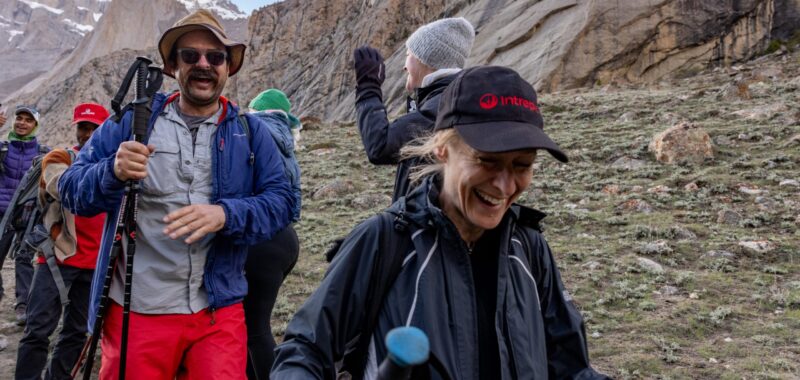Typically completed in three-to-four days, with an optional detour to Amin Brakk Base Camp (4,500 meters/14,764 feet), the Nangma Valley is a hit with our group. Our small army of cheerful local porters seem to enjoy it just as much as we do.
“My father was a porter on K2 and didn’t want me to become one because he knew how hard it was,” says 24-year-old Munir Kotakpa Kanday, an enthusiastic participant in the cricket matches that consume the afternoons of our trek. With financial pressures leaving him no other choice, Munir struggles to find the words to describe the joy it brings him to work on an “easy” route close to home for the same (government mandated) pay. “It is bliss on a level I can’t explain,” he says.
For trekking tourism to have a sustainable future in Kanday, the community must not be forgotten, Umer tells me. “If we want to preserve these landscapes, it has to benefit the communities,” he says. Kanday isn’t the only mountain community that is looking to low-impact tourism to diversify its reliance on agriculture. Among them is Yugo, where we break up the magnificent drive from Skardu to Kanday with a guided walk through the traditional village (still using a watermill to grind grain) and a feast of freshly harvested cherries and sweet white mulberries.

